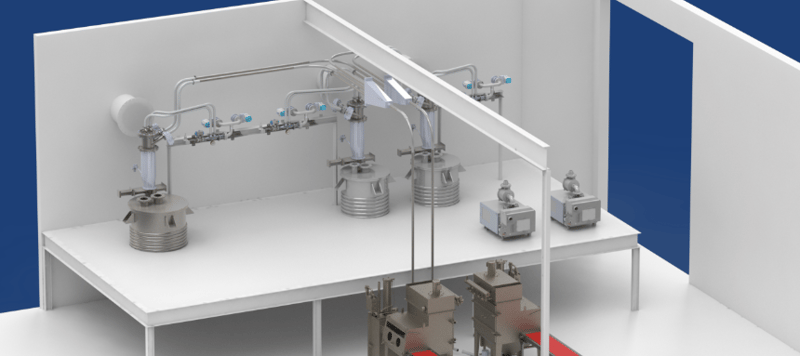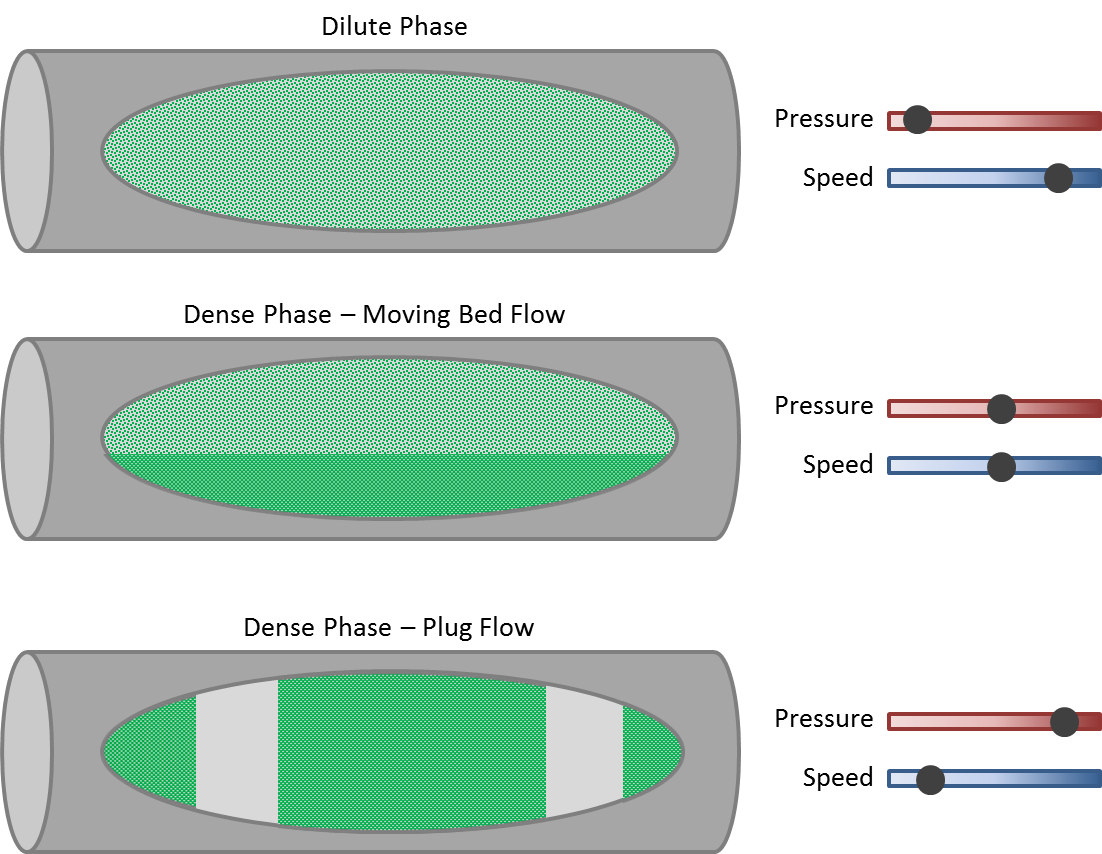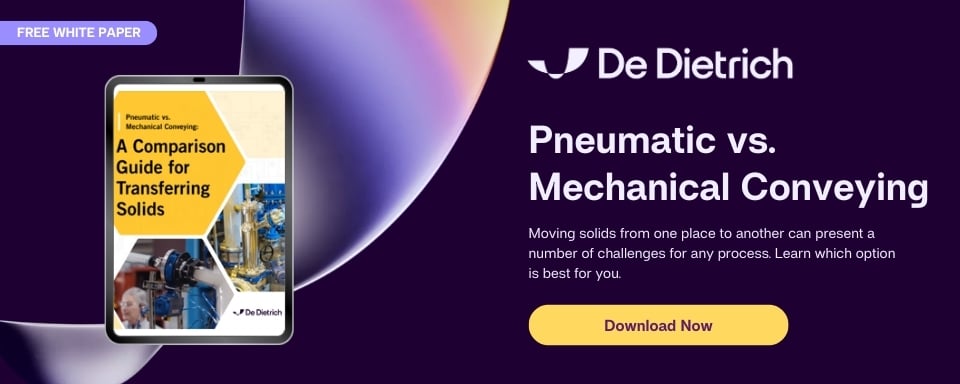Pneumatic Conveying: The Principles of Moving Materials in Gas Streams

In numerous industries worldwide, there's a constant need to move materials from one location to another. Enter pneumatic conveying – an ingenious system that uses the power of air to transport bulk solids and powders. Whether you're in the food processing, pharmaceutical, chemicals, plastics or other industry, understanding the principles of pneumatic conveying can be beneficial. Let's dive in!
What is Pneumatic Conveying?
At its core, pneumatic conveying is about transporting dry bulk materials through a system of tubes or pipes using gas (either atmospheric air or one of its inert component gases) as the conveying medium. This method is highly efficient and can be tailored to move materials over varying distances, from a few meters to several kilometers.
Key Principles of Pneumatic Conveying
Conveying Phases
There are primarily two types of pneumatic conveying:
- Dilute Phase Conveying: Here, the material is suspended in the conveying gas and usually moves at higher velocities. It is generally achieved by moving gas through the conveying line at the necessary velocity and pressure.
- Dense Phase Conveying: The material is conveyed in either continuous ("moving bed") or discontinuous (distinct plugs or slugs) flow within the conveying line and typically moves at lower velocities. This method is preferable for fragile materials or when minimizing wear and tear is crucial.
The graphic below illustrates the different phases of flow with regards to pressure and speed:
Driving Force - Positive Pressure vs. Vacuum
There are two types of motive force when pneumatically conveying solids: pressure or vacuum. Both can be used to effectively convey solids, but each offers different benefits:
- Positive Pressure Systems: These systems push material from the starting point to the end. They're especially effective for conveying materials over longer distances.
- Vacuum Systems: These systems pull material through the conveying line. They're generally used for shorter distances and provide easier pick-up of material. Additionally, vacuum systems provide the safety advantage of reduced contamination to the environment/operator in the event of a leak in the conveying line.
Material Considerations
The type of material being conveyed plays a significant role in the design and operation of a pneumatic conveying system. Factors such as particle size, shape, density, and abrasiveness can impact system efficiency and wear rates.
Conveying Gas Properties
The properties of the conveying gas are important. Parameters like temperature, humidity, and pressure can influence the system's overall performance and the behavior of the material being conveyed.
System Components
While pneumatic conveying systems can vary in design and scale based on the equipment manufacturer and process requirements, they all feature these key elements:
- Feed Devices: These introduce the material into the conveying line. Common devices include screw feeders, rotary valves, and venturi feeders.
- Conveying Line: Typically made of metal or plastic tubes or pipes. The design (such as elbows and diverter valves) can impact material flow and system wear.
- Air Movers: These provide the required gas velocity and pressure for conveying. Examples include blowers, fans, compressors and vacuum pumps.
- Separation Devices: Positioned at the end of the conveying line, they separate the conveyed material from the conveying gas. Common devices include cyclones and filter receivers.
System Layout and Design
The configuration of a pneumatic conveying system, such as the length of the conveying line, the number of bends, and vertical vs. horizontal conveying, can significantly influence its efficiency and operational challenges.
Advantages of Pneumatic Conveying
Sure, we're a little biased at DDPS about pneumatic conveying, but a little research will show you there's a good amount of data that proves it offers some substantial benefits over other transfer methods, including:
- Flexibility: Systems can be tailored to fit into complex plant layouts, conveying materials up, down, or around obstacles.
- Enclosed System: Minimizes environmental contamination and is excellent for handling hazardous or sensitive materials.
- Low Maintenance: Fewer moving parts than mechanical conveying systems, leading to reduced wear and maintenance.
Conclusion
Pneumatic conveying, with its adaptability and efficiency, offers a compelling solution for transporting bulk materials across various industries. Understanding its core principles is crucial for anyone keen on optimizing their conveying processes or looking to implement a new system. As with any industrial system, ensuring it's appropriately designed and maintained is the key to long-term success.
At DDPS, we can help you find the right solids handling solution for your process. Our innovative powder handling systems can safely, reliably and efficiently transfer powders and other bulk solids. Sounds interesting? Want to hear more? Contact us to connect with an experienced solids handling engineer to discuss your process needs in more detail.
